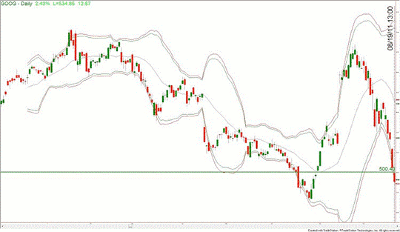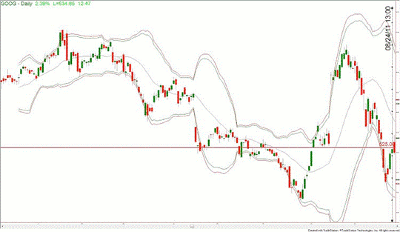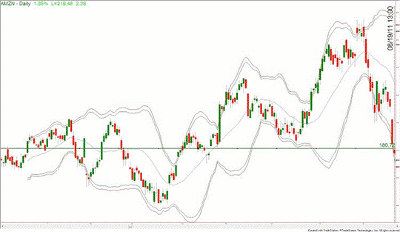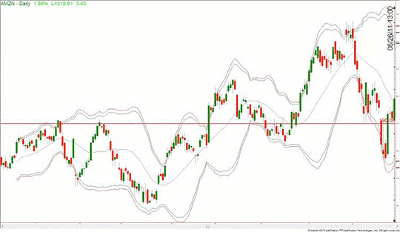Choosing the right strategy doesn’t guarantee results, as evidenced by these weekly option trades gone wrong. See additional factors that can turn the market against you and take proper precautions.
Recently, I was teaching an options class at Online Trading Academy Dubai and a trader had applied a credit spread strategy that we had just covered in the class, live in the market. Sometimes, the worst thing that can take place for a new trader is to have a string of winners. Those winners can send out the wrong message that option trading is easy, and no further education is needed.
In the case of this Dubai student, the experience was exactly the opposite. He had taken a couple of trades and they turned out to be losers. Unlike having too many winners, after having several losers, there is a tendency to question whether a strategy works at all.
After communicating with him via E-mail several times and asking him to provide me with the specifics, I was able to reconstruct a somewhat accurate picture of what had taken place. I also asked him for permission to share his trades and my insights with you, the audience.
The first trade was on Google, Inc. (GOOG), and here are the specifics of it:
GOOG was trading at $500.40 on Friday, August 19, 2011, with the immediate resistance at $525. A bear call spread was done involving the sale of the 525 calls and the purchase of the 530 calls. At the time, the implied volatility (IV) of GOOG was high. The sale of the 525 call meant that the upside protection was $24.60 (from $500.40 to $525).
The exact transaction of his trade was as follows:
Buy to Open (BTO) + 1 Aug (wk4) (6 x OTM) 530 call @ $1.15
Sell to Open (STO) – 1 Aug (wk4) (5 x OTM) 525 call @ $1.70
Max Profit: ($1.70 – $1.15) = $0.55
Max Loss: (530 call – 525 call = $5 – $0.55) = $4.45
Rate of Return (ROR) = Max P/Max L = $0.55/$4.45 = 12%
Breakeven Point (BEP) = Sold strike plus the credit, or $525.55
The trade listed above is shown in the chart below, which has Bollinger bands on it. The green horizontal line was his entry price and the vertical, dotted black line was the exact date of the entry.
The trader had two exits placed on this trade, also known as order cancels order, or OCO. The first one was to buy to close the sold 525 call for a nickel with a “good ‘til cancelled” (GTC) order. The second one was a GTC conditional order stating that the whole spread should be exited at the market price if GOOG trades at or above $525.
As you can see on Figure 2 below, on Wednesday, August 24, 2011, the stock rallied above that $525 level (marked on the chart with the red horizontal line) and took him out by closing the entire spread. According to his facts, he lost $2.20 on the spread. Though he lost, I consider this a good trade because he followed his clearly-spelled-out rules for exit.
NEXT: Losing Weekly Option Trade in Amazon.com (AMZN)
|pagebreak|The second trade was on Amazon.com (AMZN):
On the very same day, Friday, August 19, 2011, AMZN was trading at $180.72 with resistance at $190. When the 190 call was sold, the upside protection was from $180.72 to $190, or exactly $9.18.
BTO + 1 Aug (wk4) (3 x OTM) 195 call @ $0.55
STO – 1 Aug (wk4) (2 x OTM) 190 call @ $1.30
Max P ($1.30 – $0.55) = $0.75
Max L (195 call – 190 call = $5 – $0.75) = $4.25
ROR = Max P/Max L = $0.75/$4.25 = 17%
BEP = Sold strike plus the credit, or $190.75
The above figure shows how the chart looked at the entry with the green line showing the exact price and the vertical, black dotted line showing the date of entry. On this AMZN trade, he did not have an order cancels order (OCO) set up like he had on the GOOG trade. He manually closed out the trade for a loss of $4.20, just a bit less than the maximum loss of $4.25 per contract.
Figure 4 below shows how the price had rallied through the red line (sold 190 call) and closed much higher on Friday, August 26, 2011, the last day of his trade.
Looking at both of these trades, I found several errors.
Weekly credit spreads were sold on "jumpy" products in an extremely volatile environment. I call GOOG and AMZN "jumpy" because they can go in either direction, irrationally far, fast, and furiously.
Selling weeklies means that there is virtually no time to reverse the trade. Also, if the premium goes up due to an increase in Vega, then it will cost more to close the trade than what the trade was initially sold for.
Technically, the price closing outside of the lower Bollinger band is not the very best short entry. Outside a Bollinger band, there tends to be a reversion back to the mean.
In other words, it is almost like a rubber band effect. When the price action stretches outside of the lower band, as was the case in these two trades, then it is possible that there could be a knee-jerk reaction back to the upside, at least to the middle line of the Bollinger bands. Unfortunately, that is exactly what took place for both of these GOOG and AMZN bear call spreads.
In short, the bear call spread was the proper option strategy for this high-volatility environment. But the trader used it at the wrong time technically and on the wrong instruments.
This option strategy works, and mathematically, the trader would not have suffered as big a loss on AMZN had he placed an OCO like he did for the GOOG trade.
There is no 100% guarantee in trading the markets that the trade will go as anticipated. The best suggestion that I can give to the novice trader is to trade small—a single contract to start with— during the learning stage.
Also, get better at your technical analysis and have a worst and best scenario pre-planned. Good trading, and do not lose heart. The market is always right and never boring!
By Josip Causic, instructor, Online Trading Academy

























